Abstract
Groups of volunteers were immunized with one of three influenza virus vaccines, and the resistance to challenge infection with attenuated influenza A (H1N1) virus was measured 8 months later. The vaccines were aqueous subunit influenza A/USSR/77 (H1N1) vaccine, aqueous subunit influenza B/Hong Kong/73 vaccine, or attenuated influenza virus A (H1N1) vaccine. The B virus vaccine was included as a control to assess the incidence of natural A virus infection during the study period. A proportion of the B virus vaccinees had pre-existing A (H1N1) virus antibody and were used to study the immunity conferred by natural infection to the live virus challenge. The serum antibody responses were measured at 1 and 8 months after immunization. The results showed that all the vaccines induced serum HI antibody in a proportion of the volunteers; however, after 1 month, higher titres of serum antibody were found in volunteers given inactivated A vaccine than in those given live attenuated A virus vaccine. Eight months post-immunization the titres of serum antibody in volunteers given inactivated vaccine had declined significantly, but there were no changes in the antibody titres of those given live virus vaccine. The incidence of infection by the challenge virus at 8 months post-immunization was directly related to the serum antibody titres 1 month post-immunization; no evidence was obtained to suggest that those given live virus vaccine had a more solid immunity than those given inactivated vaccine.
Full text
PDF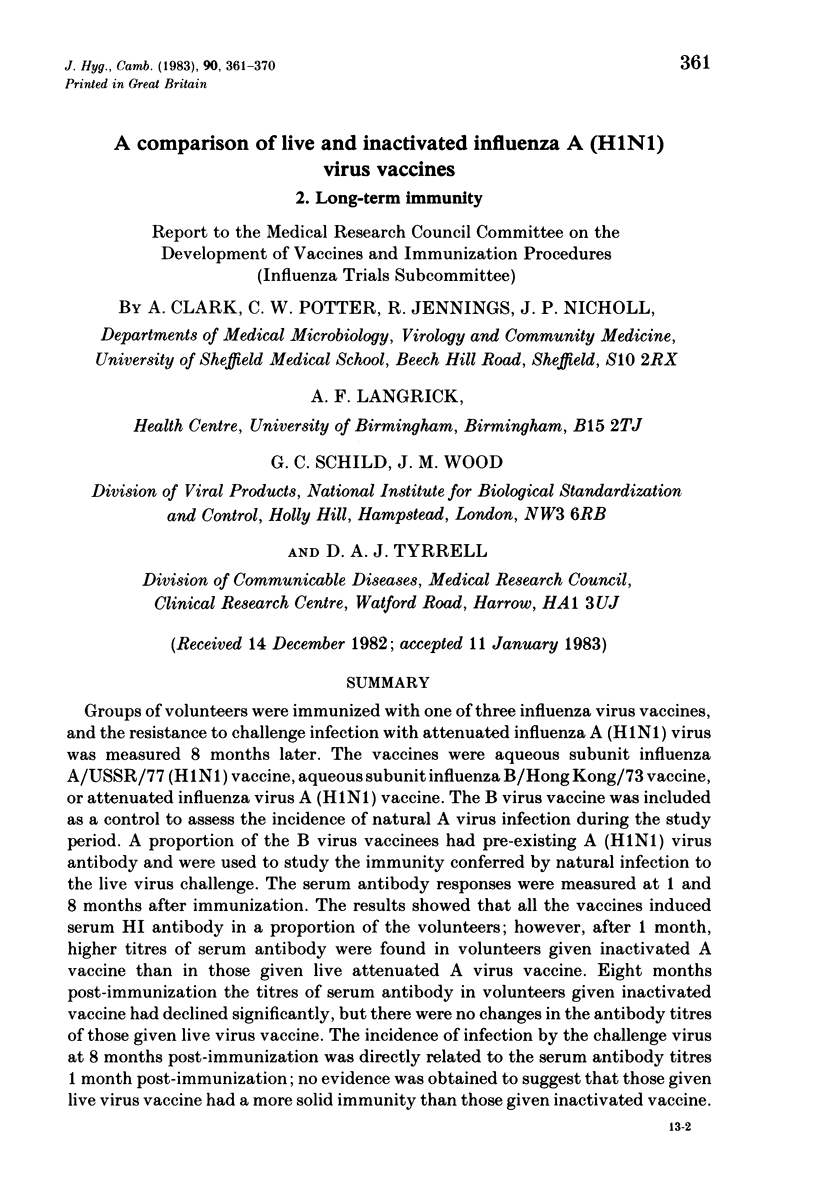
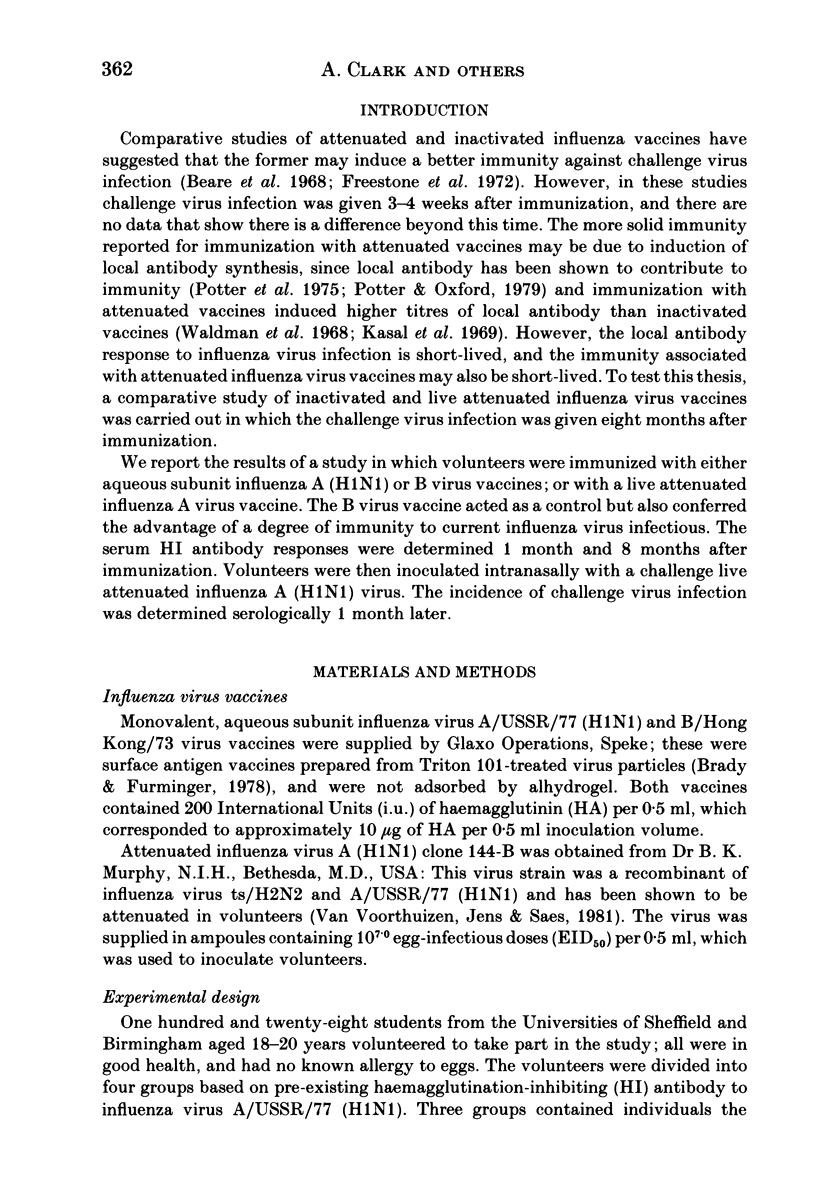
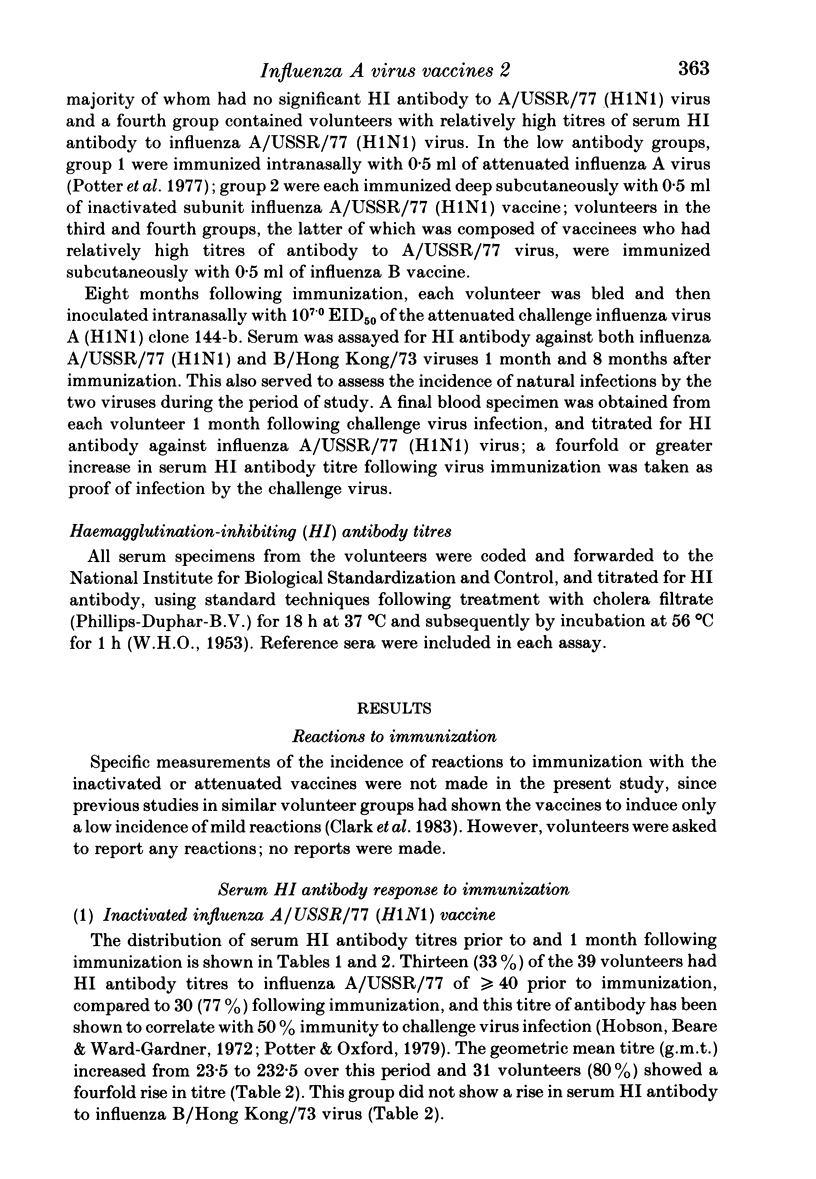
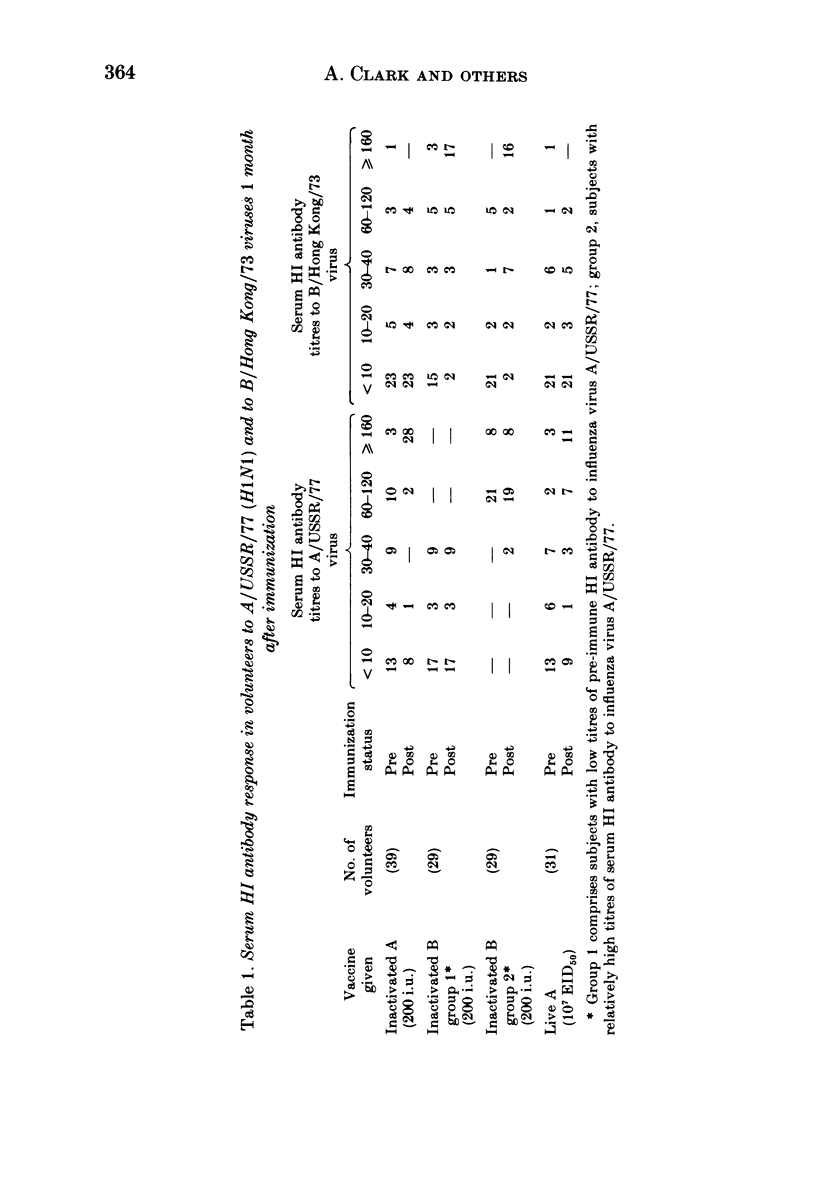
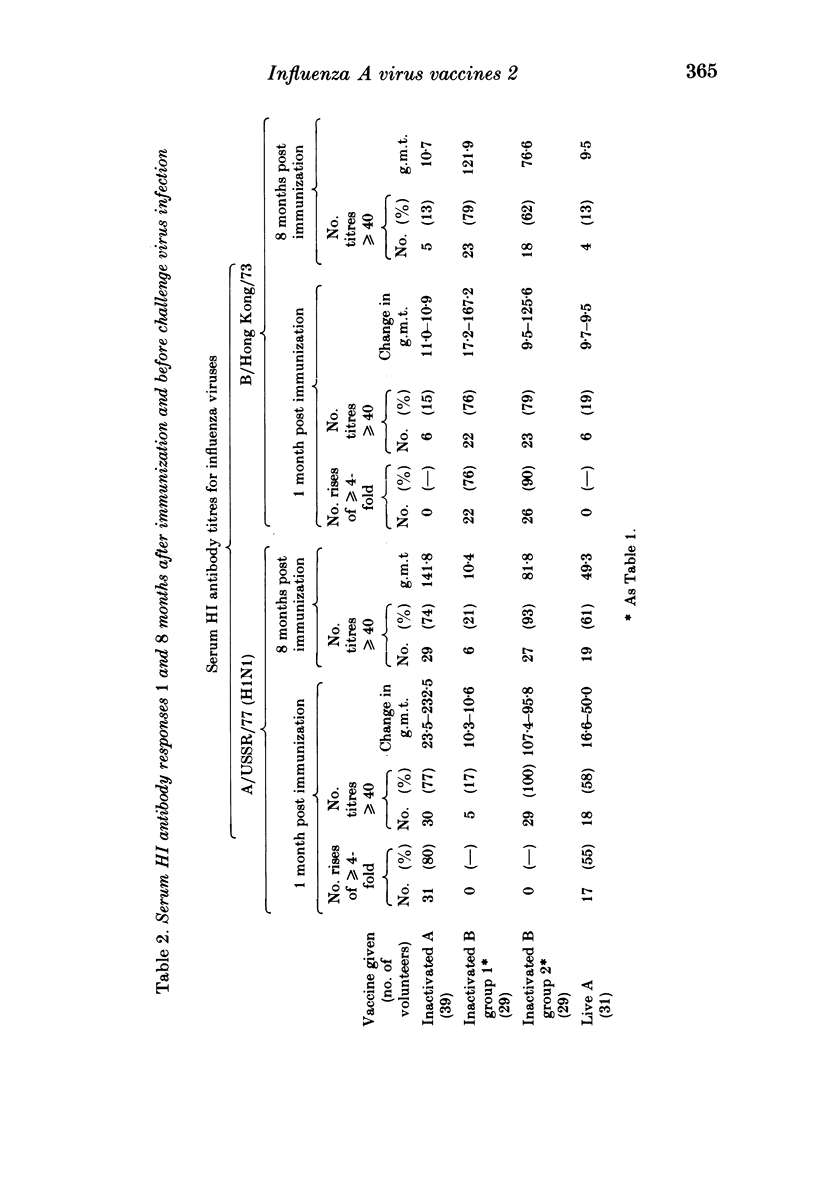
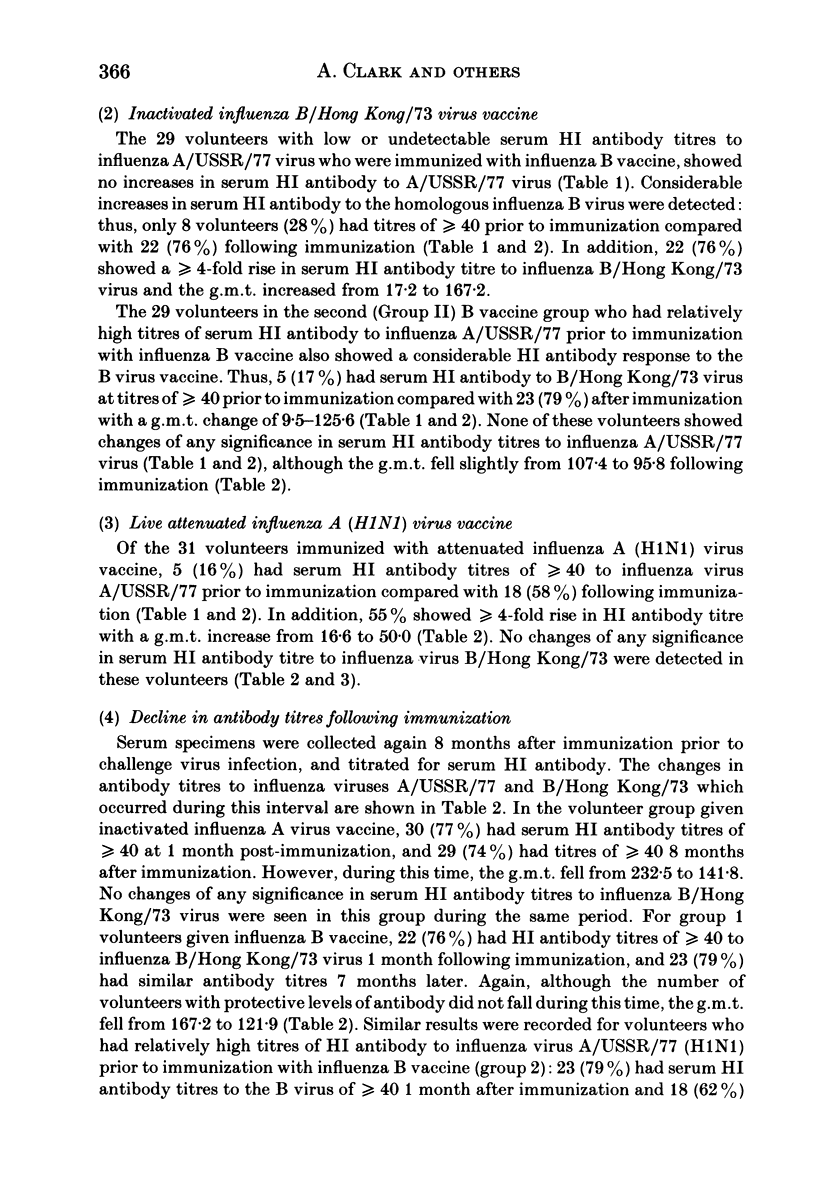
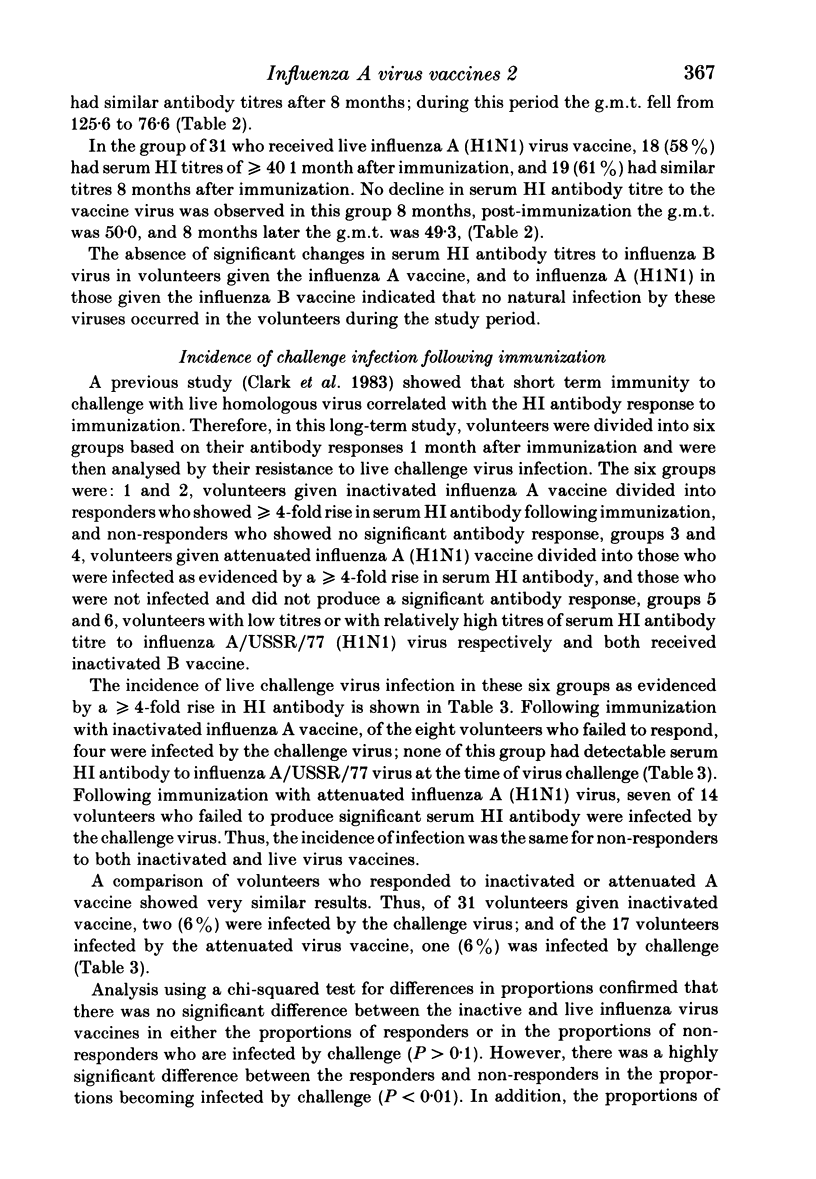
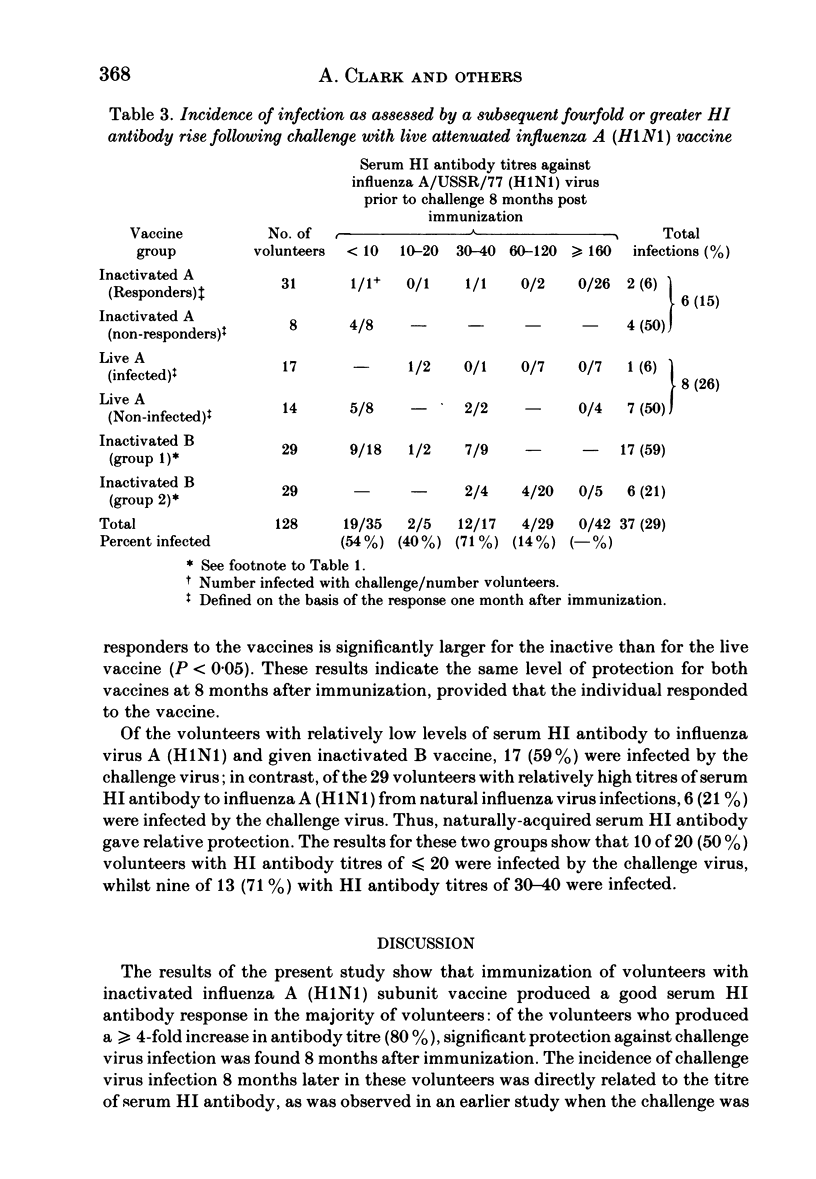
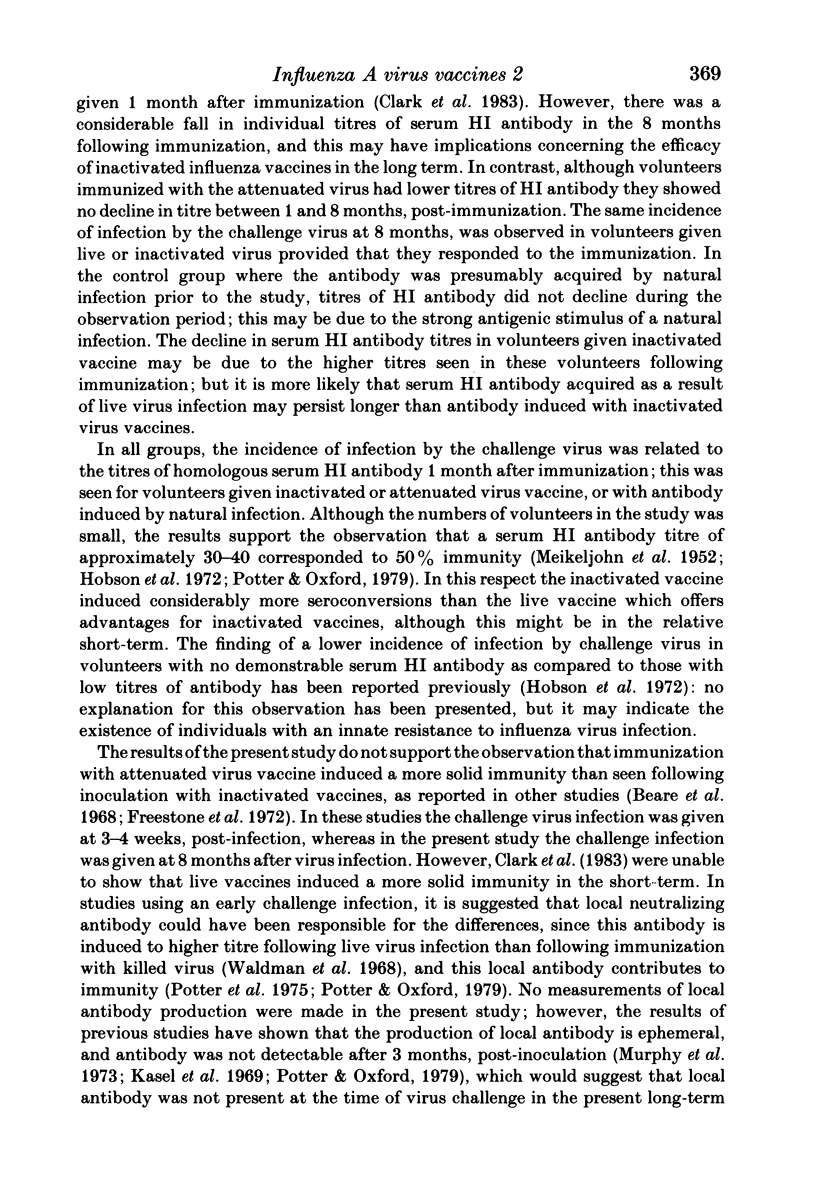
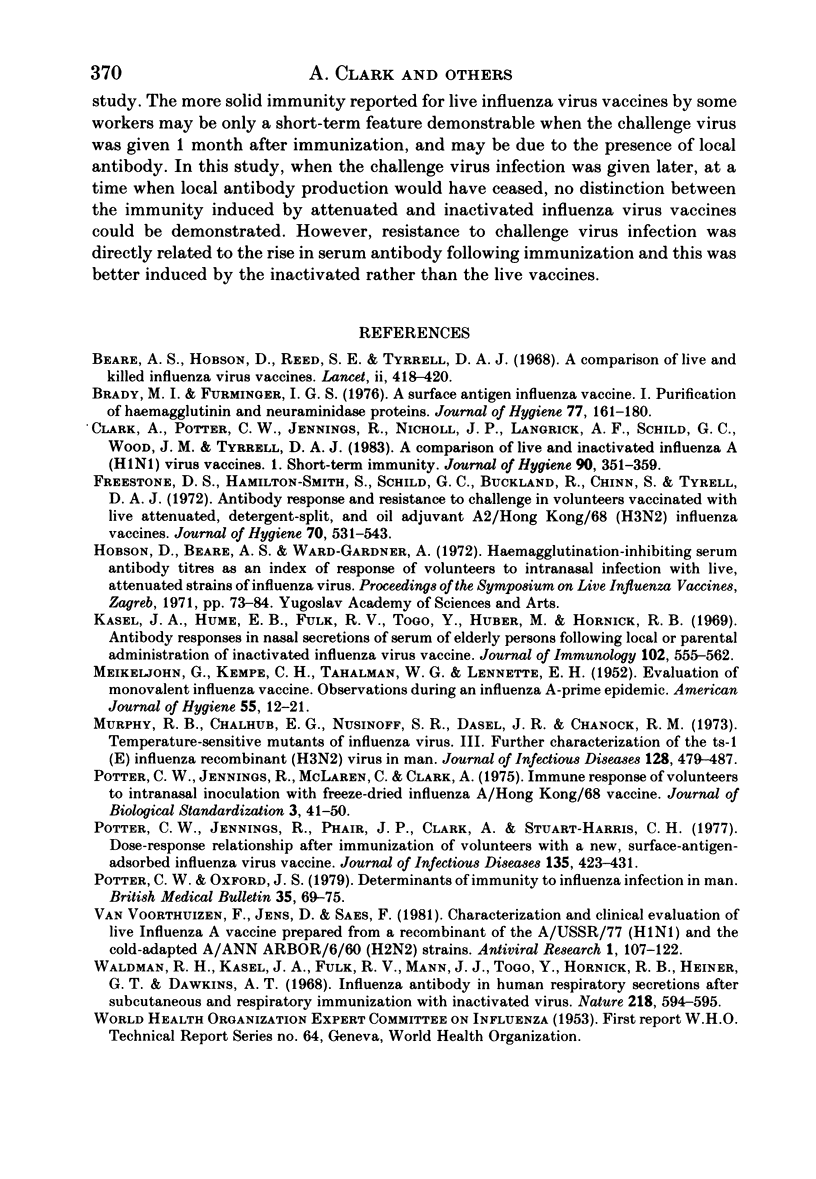
Selected References
These references are in PubMed. This may not be the complete list of references from this article.
- Beare A. S., Hobson D., Reed S. E., Tyrrell D. A. A comparison of live and killed influenza-virus vaccines. Report to the Medical Research Council's Committee on Influenza and other Respiratory Virus Vaccines. Lancet. 1968 Aug 24;2(7565):418–422. doi: 10.1016/s0140-6736(68)90463-7. [DOI] [PubMed] [Google Scholar]
- Brady M. I., Furminger I. G. A surface antigen influenza vaccine. 1. Purification of haemagglutinin and neuraminidase proteins. J Hyg (Lond) 1976 Oct;77(2):161–172. doi: 10.1017/s002217240002458x. [DOI] [PMC free article] [PubMed] [Google Scholar]
- Clark A., Potter C. W., Jennings R., Nicholl J. P., Langrick A. F., Schild G. C., Wood J. M., Tyrrell D. A. A comparison of live and inactivated influenza A (H1N1) virus vaccines. 1. Short-term immunity. J Hyg (Lond) 1983 Jun;90(3):351–359. doi: 10.1017/s0022172400028989. [DOI] [PMC free article] [PubMed] [Google Scholar]
- Freestone D. S., Hamilton-Smith S., Schild G. C., Buckland R., Chinn S., Tyrrell D. A. Antibody responses and resistance to challenge in volunteers vaccinated with live attenuated, detergent split and oil adjuvant A2-Hong Kong-68 (H 3 N 2 ) influenza vaccines. A report to the Medical Research Council Committee on Influenza and other Respiratory Virus Vaccines. J Hyg (Lond) 1972 Sep;70(3):531–543. doi: 10.1017/s0022172400063117. [DOI] [PMC free article] [PubMed] [Google Scholar]
- Kasel J. A., Fulk R. V., Togo Y., Hornick R. B., Heiner G. G., Dawkins A. T., Jr, Mann J. J. Influenza antibody in human respiratory secretions after subcutaneous or respiratory immunization with inactivated virus. Nature. 1968 May 11;218(5141):594–595. doi: 10.1038/218594a0. [DOI] [PubMed] [Google Scholar]
- Kasel J. A., Hume E. B., Fulk R. V., Togo Y., Huber M., Hornick R. B. Antibody responses in nasal secretions and serum of elderly persons following local or parenteral administration of inactivated influenza virus vaccine. J Immunol. 1969 Mar;102(3):555–562. [PubMed] [Google Scholar]
- MEIKLEJOHN G., KEMPE C. H., THALMAN W. G., LENNETTE E. H. Evaluation of monovalent influenza vaccines. II. Observations during an influenza a-prime epidemic. Am J Hyg. 1952 Jan;55(1):12–21. doi: 10.1093/oxfordjournals.aje.a119500. [DOI] [PubMed] [Google Scholar]
- Murphy B. R., Chalhub E. G., Nusinoff S. R., Kasel J., Chanock R. M. Temperature-sensitive mutants of influenza virus. 3. Further characterization of the ts-1(E) influenza A recombinant (H3N2) virus in man. J Infect Dis. 1973 Oct;128(4):479–487. doi: 10.1093/infdis/128.4.479. [DOI] [PubMed] [Google Scholar]
- Potter C. W., Jennings R., McLaren C., Clarke A. Immune response in volunteers to intranasal inoculation with freeze-dried influenza Q/Hong Kong/68 vaccine. J Biol Stand. 1975;3(1):41–50. doi: 10.1016/0092-1157(75)90006-2. [DOI] [PubMed] [Google Scholar]
- Potter C. W., Jennings R., Phair J. P., Clarke A., Stuart-Harris C. H. Dose-response relationship after immunization of volunteers with a new, surface-antigen-adsorbed influenza virus vaccine. J Infect Dis. 1977 Mar;135(3):423–431. doi: 10.1093/infdis/135.3.423. [DOI] [PubMed] [Google Scholar]
- Potter C. W., Oxford J. S. Determinants of immunity to influenza infection in man. Br Med Bull. 1979 Jan;35(1):69–75. doi: 10.1093/oxfordjournals.bmb.a071545. [DOI] [PubMed] [Google Scholar]
- van Voorthuizen F., Jens D., Saes F. Characterization and clinical evaluation of live influenza A vaccine prepared from a recombinant of the A/USSR/92/77 (H1N1) and the cold-adapted A/Ann Arbor/6/60 (H2N2) strains. Antiviral Res. 1981 Jun;1(2):107–122. doi: 10.1016/0166-3542(81)90037-1. [DOI] [PubMed] [Google Scholar]


